Electromagnetic Induction

Electromagnetic Induction

The purpose of this is to give quick reference to information or to use in an emergency (like if your text has accidentally been left under your desk at school).
This is NOT intended to replace reading the text with its excellent photographs, diagrams, charts, and tables.
MAGNETIC INDUCTION
Werner von Siemens and his brother, William, developed an electric generator that did not use permanent magnets. the commercial beginning of the electric industry. Siemens also laid the first transatlanfic cable in 1874 and built the world's first public street railway in 1881.
INDUCED CURRENTS
20.1 The discovery of incluced currents by Oersted showed the link between magnetism and electricity. Soon after Oersted's work, scientists attempted to find out whether an electric current could be produced by the action of a magnetic field.
In 1831 Michael Faraday discovered that cutting a magnetic field with a conductor will induce emf. Ah, the electric generator.
20.2 Faraday's induction experiments:
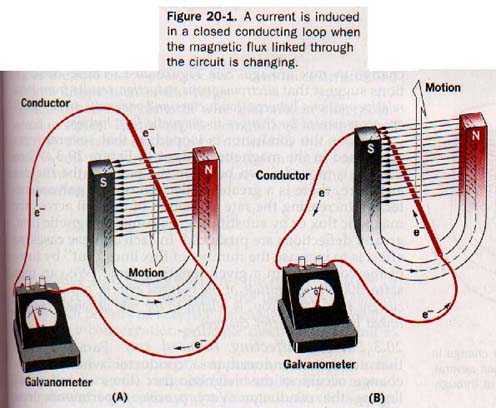
The magnitude of the induced emf is proportional to the number of magnetic lines cut per second.
The number of lines depends upon the strength of the magnet, the number cut per second depends upon the lenght of the wire and how fast it is moving.
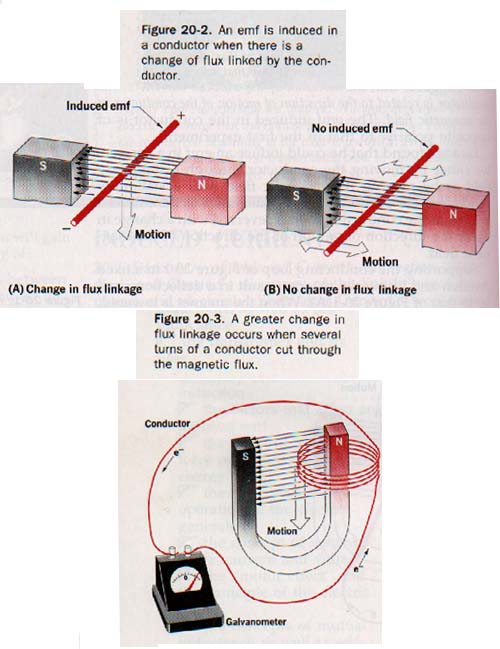
GENERATORS AND MOTORS
A generator is a device that rotates wires through a magnetic field cutting the magnetic lines. If the current is removed with slip rings, it will be alternating current inasmuch as the direction of rotation changes each half turn. A sine wave is produced.

Producing the sine wave of one cycle
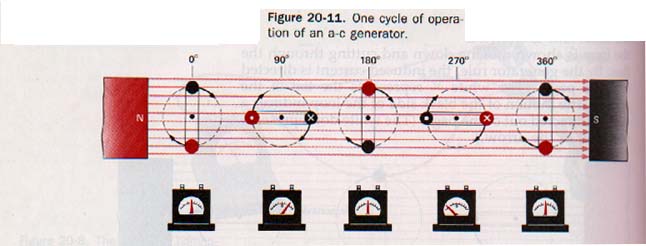
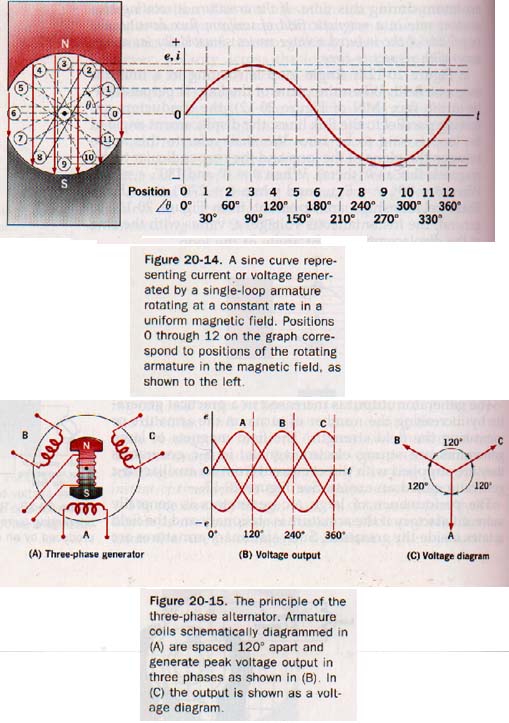
A split ring commutator changes the AC in the rotor into pulsating DC by reversing the polarity of the rotor each half cycle.
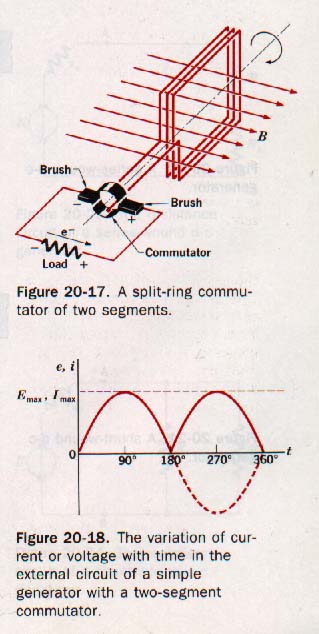
ELECTRIC MOTORS
Electric motors acquire torque by interacting the magnetic fields of the stator magnets and the rotor magnets. DC motors need a commutator to reverse the polarity every half turn to keep the rotor turning.
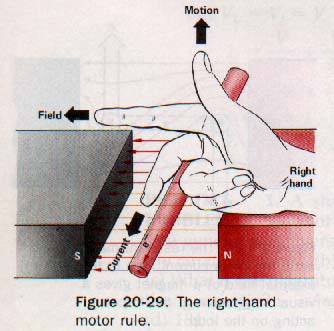
INDUCTANCE
A changing current cause a varying magnetic field. When that magnetic field cuts through another coil, an emf (or current) is induced in the secondary coil. This is inductance.
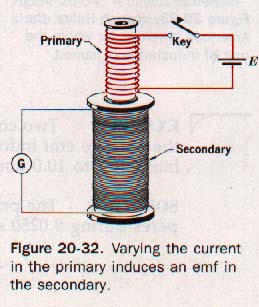
THE INDUCTION COIL "Sparky"
An induction coil has a high turns ratio so that the secondary coil will produce a very high voltage. This can be used to spark the gasoline in an engine or raise a goose ten meters straight up when it touches an electric fence.

SUMMARY
An emf is induced in a conductor when e motion between the conductor a magnetic field produces a change the flux linkage. The greater the rate of motion, the greater is the magnitude of the induced emf. If the conductor part of a closed circuit, an electron current is induced in the circuit. The direction of an induced current is always in accord with Lenz's law.
An electric generator converts mechanical energy into electric energy. The direction of induced electron current in the armature turns is determined by use of the left-hand generator rule.
The generator induces a sinusoidal emf across the armature turns. The current in the armature circuit alternates. The frequency of the generated current is expressed in hertz; one hertz is equivalent to one cycle per second. An a-c generator may be modified for a pulsating d-c output. The d-c generator is self-excited.
Electric motors convert electric energy into mechanical energy. The motor effect is the result of an electric current in a magnetic field; it is the reverse of the generator effect.
The direction of motion of the armature turns is determined by the use of the right-hand motor rule. An electric motor produces a back emf that subtracts from the applied voltage.
Practical d-c motors are of three types: series, shunt, and compound wound, Three common types of a-c motors are the universal motor, the induction motor, and the synchronous motor. Of these, the induction motor is most widely used. If a change in current in one circuit induces an emf in a second circuit, the two have a property of mutual inductance.
An emf is induced across a coil by a change of current in the coil; this property is known as self-inductance. The unit of inductance is the henry. The induced emf across a given inductance depends on the time rate of change of current in the inductance. The property of inductance is described as a kind of electric inertia.
Transformers are alternating-current devices. Primary and secondary windings have a common core. For a given voltage, the turns ratio determines the secondary voltage. The transformer may either step up or step down the a-c voltage of the primary circuit. Efficient and economical distribution of a-c power is possible through the use of the transformer principle.
Ah Yaz Indeed!
 Assignment Sheet for this Research Text Only.
Assignment Sheet for this Research Text Only.
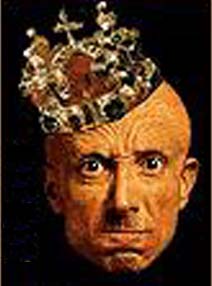 Go to Textbook Assignments for Portfolio:
Go to Textbook Assignments for Portfolio:
.................................First Semester
.................................Second Semester